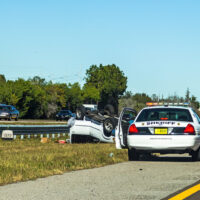City and Family of Man Killed by NYPD Reach Settlement

In the winter of 2013, a young man studying abroad in the US was killed by a speeding New York police officer. Years later, after the NYPD is alleged to have altered and concealed evidence, his family has finally reached a settlement with the city.
Ryo Oyamada was a 24-year-old Japanese man studying in the US. At approximately 12:45 am on February 21, 2013, he was crossing 40th Avenue between 10th and 11th streets in Long Island City when he was struck and killed by a police officer. It is at this point, however, where the explanation of what happened becomes muddled. According to the officer who was driving the patrol car, Darren Ilardi, he had been using his flashing lights, and the crash was unavoidable. However, video surveillance footage from the scene of the crash showed that the officer’s flashing lights weren’t on at the time of the crash. Ilardi later testified that he had cut the cruiser’s lights so as not to alert a potential suspect. According to the Oyamadas’ accident reconstruction experts, the patrol car was traveling at over 60 mph while approaching the scene of the collision, and hit Ryo while traveling at 31 mph.
The answer was also unclear when Ilardi was questioned over the emergency to which he was responding, requiring him to drive over 60 mph down a street lined with public housing. Ilardi testified that he was responding to a domestic disturbance. However, attorneys for the Oyamadas uncovered evidence that Ilardi wasn’t assigned to the disturbance he cited. Based on transcripts of the conversations held over radio that night, Ilardi hadn’t notified anyone he was responding to the domestic disturbance call, and two other NYPD units were already assigned to that call. When the Oyamadas’ attorneys requested the cell phone records of the responding officer in order to examine whether Ilardi was on his phone at the time of the crash, the NYPD refused to comply. According to the lawsuit filed by the Oyamadas, Ilardi was also reported to have a poor driving record, for which he had not received training or discipline.
Attorneys for the Oyamadas also claim that the NYPD engaged in a cover-up of the circumstances surrounding the young man’s death. They claimed in their lawsuit that the skid marks at the scene of the accident were not measured or preserved, and that witnesses who gathered at the scene of the accident were dispersed without being interviewed. They also claimed that the NYPD had interfered with the testimony of Ilardi’s partner, with him in the patrol car at the time of the accident, so that his story of events changed over time.
Police officers and other emergency responders are often entitled to immunity from liability for accidents when responding to emergencies. Even when responding to an emergency, however, police officers are required to keep the general public’s safety in mind by, for example, using their flashing lights to ensure that pedestrians are aware of the oncoming, speeding vehicle. While officers may bear liability for these types of accidents, these claims are challenging to prove, based on the broad latitude granted to emergency responders. The victim must be sure to hire an attorney experienced in personal injury litigation against New York city or state government offices, due to the complexity of these cases.
If you’ve been injured by a New York City police officer or on NYC public transportation, get help receiving the money you deserve for your injuries, and contact the dedicated and experienced Manhattan personal injury lawyer Leandros A. Vrionedes for a consultation on your claims, at 212-889-9362, or in Queens at 718-777-5895.
